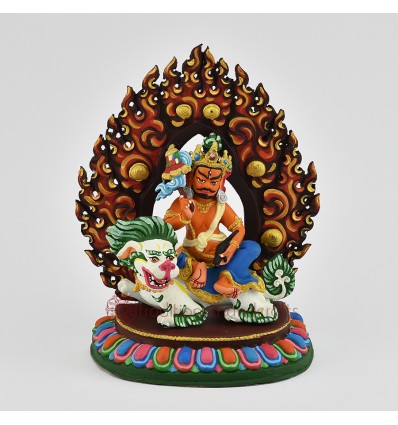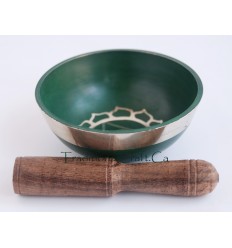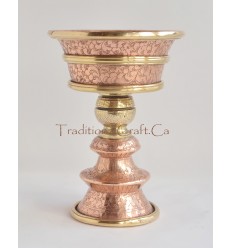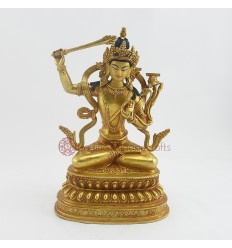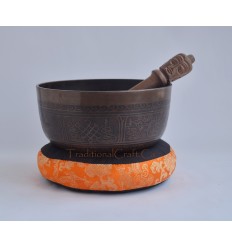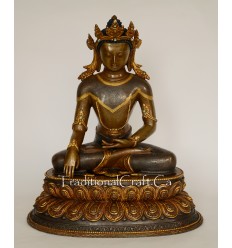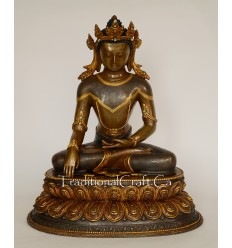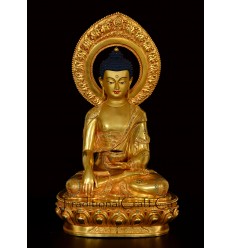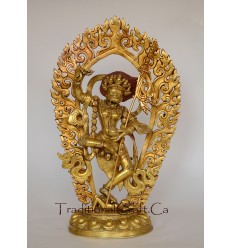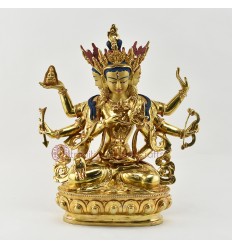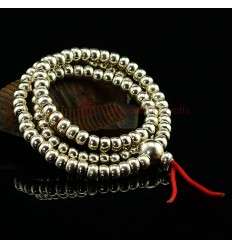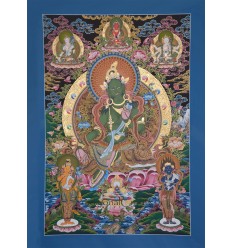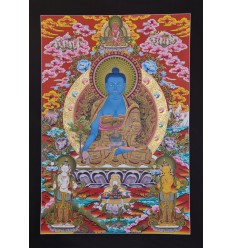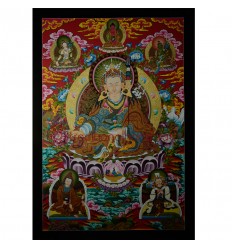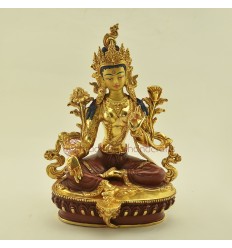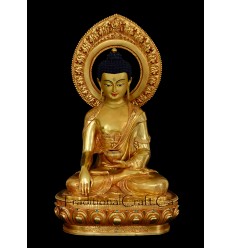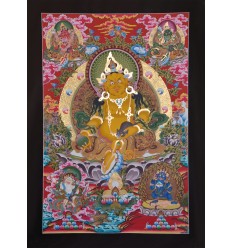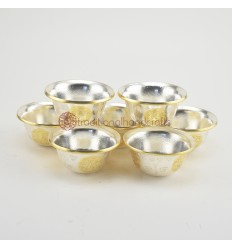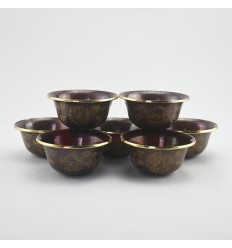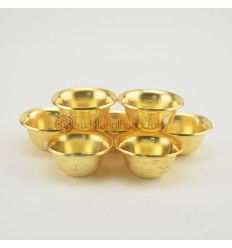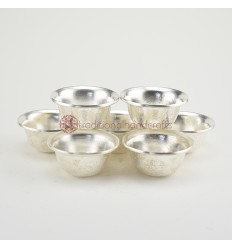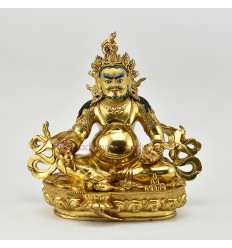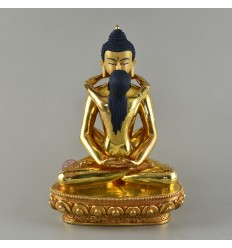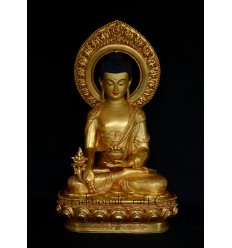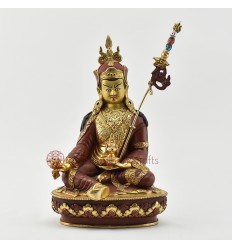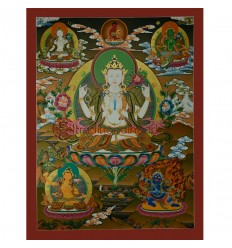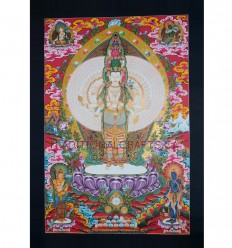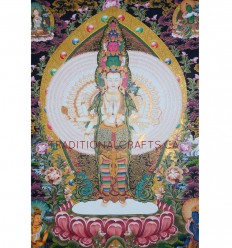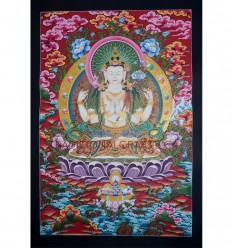No products
Product successfully added to your shopping cart
There are 0 items in your cart. There is 1 item in your cart.
Fine Quality Copper Alloy with Beautifully Hand Painted Vaisravana Statue
761768127346
New
Traditional Machine Molded Tibetan Buddhist Copper Alloy with Beautifully Hand Painted Miniature Vaisravana /Namtoshe Statue Rupa Shrine | Altar Monastry Shrine | Altar Monastry From Patan, Nepal
1 Item
Warning: Last items in stock!
Vaisravana – Kubera Statue
|
Name |
Vaisravana – Kubera Statue |
|
Height |
7” with frame |
|
5” without frame |
|
|
Width |
5.5” |
|
Depth |
3” |
|
Material |
Lost Wax Method, Copper Alloy with Beautifully Hand Painted |
|
Actual Weight |
0.772 Kg. |
|
Ships From |
Patan, Nepal |
|
Shipping Provider |
Express Shipping Service |
|
Shipping Time |
Usually ships within 48 hours. Allow 5 – 7 business days for delivery worldwide. |
|
Insurance |
Insurance is included in the shipping cost. |
Vaishravana – The Guardian of Wealth and Prosperity
Vaisravana, also known as Kubera in Hinduism, is a prominent figure in Buddhist mythology revered as the Guardian of Wealth and Prosperity. As one of the Four Heavenly Kings, Vaisravana holds a significant place in Buddhist cosmology, symbolizing not only material abundance but also righteous governance and protection.
Vaisravana’s origins can be traced to Buddhist scriptures, where he is identified as one of the four Dharmapalas, or protectors of the Buddhist teachings. Born as a human, Vaisravana, later attained divinity through his virtuous deeds, particularly his practice of generosity. His rise to divinity and appointment as the Guardian of Wealth exemplifies the Buddhist emphasis on merit through righteous actions.
Vaisravana, the Guardian of Wealth and Prosperity, occupies a revered place in Buddhist cosmology. His narrative, rooted in virtuous deeds and divine ascension, underscores the importance of ethical conduct and generosity. Devotees turn to Vaisravana not only for material blessings but also for guidance in upholding righteousness in their lives. As a symbol of regal authority and benevolence, Vairsravana inspires reverence among Buddhists seeking a harmonious balance between material and spiritual well-being.
Gestures and Attributes
Vaisravana is commonly depicted riding a lion, a symbol of strength, courage, and regal authority. His majestic appearance is often adorned with royal attire, emphasizing his role as divine protector and sovereign of wealth. Vaisravana is often depicted in Buddhist iconography holding a parasol, known as "Chatra" in Sanskrit, in his raised right hand. This symbolic attribute carries profound significance, representing protection, spiritual guidance, and the benevolent authority of Vaisravana. In his left hand, he gracefully holds a mongoose that spews jewels, symbolizing the abundance that emanates from acts of generosity and virtuous conduct. This imagery encapsulates the deity's dual role as a guardian of wealth and a symbol of righteous governance, inviting devotees to contemplate the virtues of protection, prosperity, and ethical living embodied by Vaisravana.
In many Buddhist traditions, Vaisravana is associated with the Northern direction, and his presence is invoked for blessings related to wealth, prosperity, and protection against malevolent forces. Devotees turn to Vaisravana’s benevolence, seeking not only material abundance but also guidance in navigating the ethical complexities of life.
About this Sculpture
Crafted from copper alloy using the intricate lost wax method, this statue expertly captures the celestial form of Vaisravana. Meticulously hand-carved and hand-painted, the sculpture reveals remarkable detailing in Vaisravana’s figure. The artisan's skill shines in capturing meticulous carving details, while the hand-painted touches not only enhance its beauty but also imbue the statue with a vibrant, life-like quality.This sculpture was individually handcrafted in Patan, Nepal by master artisans of the Shakya clan who are considered among the best in the world. These craftsmen are the modern heirs to a centuries-old tradition of creating sacred art for use in temples and monasteries. The fine metalworking techniques have been passed down from generation to generation since ancient times.
No customer comments for the moment.


